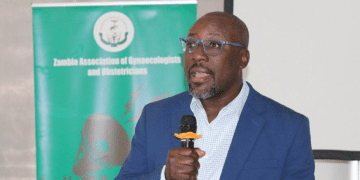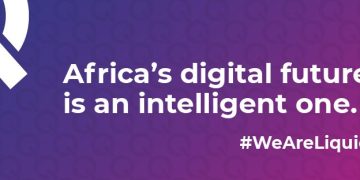By Abel Tambatamba: Lecturer- The Copperbelt University
Currently, many industries are undergoing huge changes, electricity and transportation are excellent examples of such which are undergoing rapid changes in terms of technology and customer service. These changes are mainly due to the following three trends: Decarbonization; automation; servitization and prosumership.
Decarbonization is the process of removing carbon from an alloyor other material, including the atmosphere. In this paper, the context is about reducing the carbon footprint in the atmosphere.Automation is the use of technical means, economic and mathematical methods and control systems to partially or completely free a person from direct participation in labor processes. On the other Servitization is when customers pay for a service rather than buying the equipment themselves that provide a service. Prosumers are a new type of energy users that consume, produce, store and share electricity with others that use this form of energy.
It is well known that the electricity and transport sectors are among the main sources of greenhouse gases (GHG), therefore, they have a huge negative impact on the environment. The latest statistics collected by Net0 show that electricity and heat production account for about 25 %, whereas the transportation industry accounts for 14 % of the total global GHG production from the burning of gasoline, diesel, heavy fuels, natural gas and other fuels
In order to reduce GHG emissions (decarbonization) in the transportation industry, electrification of the industry is being carried out, through the replacement of fossil fuel vehicles with electric ones. Its evident electric cars are becoming increasingly popular as data shows that in 2020 only 6 % of electric vehicles were sold worldwide, while this figure is expected to grow to 13 % in 2025 and 23 % by 2030. By 2022, Norway intended to replaceall its ferries that operated on fossil fuels with electric one in order to decarbonize that section of the transport sector. An Indian company, Ola, plans to commence the production 10 million electric scooters per annum in order to reduce carbon generation from scooters that operate on fossil fuels. This will enable the company to be the first large-scale electric scooter manufacturer in the world. Another company, Daimler, has invested in the production of electric trucks with a range of about 402 km (250 miles), in a quest to reduce GHG produced from trucks. In addition, decarbonization of the transport sector in developed and industrialized countries is taking place through the production of hydrogen gas using environmentally friendly technologies, and in turn, this gas is being used in heavy cars, trucks, airplanes, ships and trains.
Decarbonization of the electric power industry means the transition from fossil fuels in electricity generation to carbon-neutral methods. In the recent past, it has been noticed that nearly the whole world is switching to renewable energy sources, such as photovoltaic, concentrated solar power technologies, wind power, nuclear power and long-term energy storage systems. The widespread use of biofuels and geothermal energy systems is alsotrending.
Automation of the transport sector will not only change the way people and goods are moved, but will also improve road safety, reduce congestion and change the appearance of our cities as they would have to be rebuilt in accordance with modern automated transport systems. Currently, several companies, including Tesla, are developing automated vehicles of the 5th level, i.e. fully automated cars, and the 4th level, i.e. semi-automatic vehicles. Waymo, an American company, launched the second ever self-driving taxis in 2020, after a Chinese company Auto X did it in 2021. Several other companies around the world are working towards initiation of production of fully automated trucks and trains.
Automation in the electric power industry to a greater extent depends on the use of the Internet of Things (IOT). This trend has led to emergency of automated electrical appliances in buildings, IOT-SCADA systems, automated street lighting systems and power distribution networks as well as smart grids. Smart grids are electrical power systems that use information and communication technologies (ICT) to collect data about the behavior of consumersand automatically control the supply systems based on the gathered information, or vice-versa.
As the population and road traffics in megacities grows and governments take more care of the environment, the number of days when everyone owns a car are becoming limited. The trend developed, industrialized and highly populated cities is that the transport sectors are transitioning from where vehicles are owned by individuals to ‘servitization’, where they are simply rented. The idea is to reduce the number of cars in cities while satisfying the transport demands. For example, one person may rent a car for a few hours during the day to run errands, another can use it in the evening and a third person at night. The rental of electric scooters and electric bicycles is becoming very common and allows cargo delivery companies and individuals to travel shorter distanceswithin a neighborhood.
In contrast to the transport industry, where servitization is trending, in the electrical sector, ownership of power generation systems by consumers is trending and is been referred to as prosumership. Mostly in Europe and north America, some consumers are becoming owners of small renewable energysystems that generate electricity for their own consumption when conditions allow, and sell the surplus to the grid, if available. When conditions are not favorable for their generation systems to produce energy, consumers buy electricity from the power grid, hence the term “prosumer” (producer and consumer).
Despite that Zambia, in its Nationally Determined Contribution (NDC) to the Paris Agreement on climate change, pledged to reduce (GHG) emissions by 25 % (20,000 Gg CO2 eq.) on its own or by 47 % (38,000 Gg CO2 eq.) with substantial international support by 2030, it has no strategy to minimize emissions from the transport sector. In the energy sector, it is also only doing so through establishment of new renewable power plants and not reducing the emissions from the existing thermal and diesel power plants in the country. The GHG emission mitigation actions pledge in the NDC are centered only on Sustainable forest management, Sustainable agriculture and Renewable energy and energy efficiency, which are not the sole contributors to the global GHG footprint.
The power utilities companies in Zambia have not taken full advantage of the available automation technologies available on the market to make their operations cost-effective and efficient. One of the evidences is in the implementation of the infamous loadshedding programs which is mostly manual. Instead of automatically and remotely disconnecting some sections of the power system, the companies require to mobilize some human resource (which has to be paid extra if its outside working hours) and vehicles (which have to be fueled and would wear out from excessive movements) to carry out the task. This way the companies are subjected to huge wage bills, high operation costson fuel and spend more on replace or maintenance of vehicles.Local authorities who manage street lighting systems have equally not tapped into the benefits automated systems. It is common to find street lights working during the day, which could otherwise have been switched off automatically and save the wasted energy, reduced the bill on electricity and prolonged the life of lamps.
The transportation and electricity infrastructure development currently taking place in Zambia is hardly accounting for automations of these sectors. It means that the country would lag for several decades if it does not begin planning for automatic transport and electrical power systems now. The country ought to serious start considering electrifying railways systems, introducing battery-electric buses and prepare for the imminent electric cars.The planning should not only be focused on development of infrastructure compatible with automation of these systems, but also on the employment of the work force that would be rendered redundant as a result of the automation.
Currently security in the country may be not sufficient for rolling out bicycles, scooters and a huge amount of cars on servitization business model. Nevertheless, the country still need to start preparing for the future since they say goes ” the future belongs to those who prepare”.
The potential to reduce electricity deficit in Zambia through rooftop mounted solar panels couple with battery banks is high. What would delay this is the inability of the energy regulations board to develop a strategy for prosumership in the country. Research shows that majority of medium and high income earninghouseholds in Zambia have enough space of their roofs and capitalto invest in rooftop photovoltaic solar systems. In addition, they are prepared to install them provided an attractive offer price to sell electricity to the grid is on the table.
In the coming years, the world is expected to experience an increase in the electrification of railways, cars, buses and the transition from the use of fossil fuels to biofuels that do not produce GHG in the entire transport industry. Also to be encountered is an increase in the number of nuclear, solar, windand geothermal power plants. Thermal power plants running of coal and natural gas would not disappear rather to be seen isprogress in technology of filters that minimize emissions of hazardous gases and vapors from these installations. In the nearest future, it is expected that self-driving transport systems, self-switching electrical appliances in buildings and self-regulating electrical installations would be widespread universally.
Further, more vehicles would be offered for rent rather than people owning them. More consumer buildings would own their own renewable energy sources on their roofs or in their yards and sell surplus of the electricity generated to power utility companies, andonly buy a deficit that they are unable to fill, especially during peak hours.
It is not too late, but the time is now for Zambia to start aligning its developmental agenda with global progressive trends discussed in this article. Most of these trends are tried and tested and would accelerate Zambia’s efforts of attaining a status of medium income country by the year 2023.








































Amazing article very insightful.